Chronicle of the distant bomber Er-2
By the beginning of World War II, the long-range bombers Er-2 did not have time to enter the combat units of the Red Army Air Force. Only in May-June of 1941, military representatives of the plant No. 18 began to accept serial cars. 25 June in Voronezh, the formation of a special purpose long-range bomber air regiment (dbap OSNAZ) of a three-squadron squadron began on the Ep-420 aircraft. The commander of the unit was appointed Colonel N.AND.Novodranova. The status of a “special” regiment was obtained, in particular, because it was assigned to especially important tasks related to the defeat of objects in the deep rear of the enemy.
The basis for the new regiment was the 100 st dbap, from which most of the technical staff and one squadron of flight personnel were taken. Two other squadrons manned pilots GVF. These were pilots with many years of long-distance flight experience in adverse weather conditions and at night. Especially prepared was the navigator composition. In July, 25 graduates from the Poltava school for the improvement of navigators who had previously been recruited from the navigator squadrons and regiments arrived at the regiment. Now they turned out to be ordinary crew navigators!
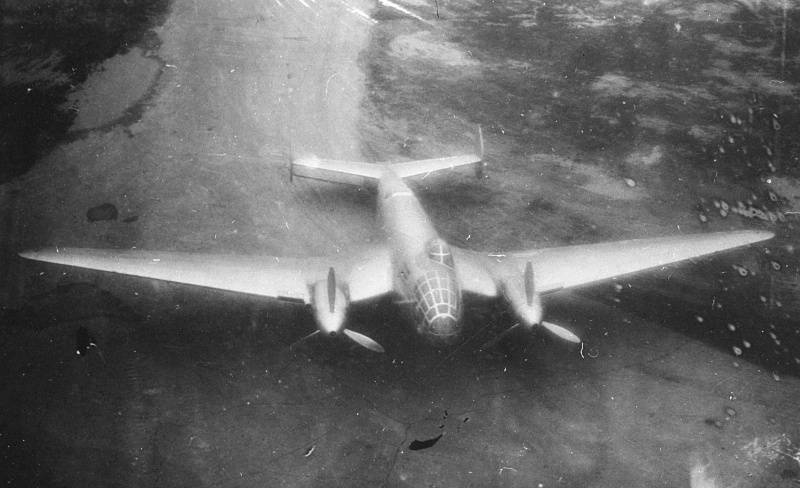
On July 8, 1941, in Voronezh, they began to complete the second aviation regiment on Er-2 aircraft - the 421st ddbap OSNAZ. Its commander was a bomber pilot. aviation Air Force Red Army Lieutenant Colonel Gusev. Once again, pilots, navigators, radio operators, were carefully selected as part of. In a word, everything was done to put together two special regiments in the shortest possible time, to turn them into real combat units.
The technique first entered the 420, and then the 421 dbap. In the sky over Voronezh it became crowded from the booming aircraft: in addition to two special regiments, there was an overflight of the Il-2 attack aircraft, to which the plant No. 18 switched to mass production. In mid-July, the 1941 r. 420 th regiment was transferred to Rostov-on-Don, and at the end of the month the 421 dbap flew there.
By 4 August, the 420 dbap received the 32 of the Er-2 aircraft and one PS-84, and the 421-dbap - 28 Ep-2 and the PS-84. At plant number 18, 10 machines remained at varying degrees of readiness, another bomber was transferred to plant number 240 to install more powerful AM-37 engines.
The training of the regiments was accompanied by a large number of flight accidents. Even taking into account the elimination of deficiencies revealed by military acceptance and numerous commissions during the period of completion of the “Eros”, the planes remained “raw”. The most serious defect was the leakage of gas pipelines in the engine nacelles. So, on the plane of the factory number 201, the representatives of the chief designer, the leading engineer Sverchevsky and the senior master Slepnyov, sent to the regiment after one of the flights found out that “the entire fire wall and the rear part of the engine hoods were covered with fresh paint, used by for tint fuel. The presence of a leak (to a lesser extent) is also fixed on the machine serial number 101. This defect during a long flight would inevitably have led to the fire of the aircraft. ”
The exhaust manifolds installed on the "Eers" turned out to be defective. They had burned-out welding on the flanges, so after two or three hours of work in the conditions of vibration they gave cracks through which the hot exhaust gases got inside the engine nacelle. One of the pilots of the 420 th dbap, twice Hero of the Soviet Union, A. I. Molodchy recalled one more reason for the fires of Ep-2: the drainage pipes of the petrol system were removed due to a design error ... under the engine hoods.
"Ery" sometimes burned like candles, never faced with the enemy. While identifying the causes and methods of dealing with this scourge, foreign objects were also found inside the superchargers of the motors. It turns out that the screws that had been fastened to the net in the channel of the air intake of the supercharger, which was designed just to prevent all kinds of garbage from getting into the motor, were turned out from vibration. Screws just forgot to lock. In addition, they found other “details” inside the blower diffusers: a five-kopeck coin, fragments of a drill, and even a wrench. Several engines required repair, and almost all aircraft - factory modifications.
Another serious nuisance was defects in the landing gear cleaning system. At least two cars in the 421 air regiment suffered accidents during landing due to the folding of the landing gear during the run. The technical staff did not yet have strong maintenance skills for a complex machine, the design of which turned out to have many “thin” places.
In July, 1941 was formed 81-I long-range bomber division, which included and 420-th dbap. It is not difficult to imagine the feelings of Colonel Novodranov, when he received the combat order of the commander of the air division of the brigade commander MV Vodopyanov about the first combat departure. The task was the highest category of complexity. It was necessary to transfer two dozen EP-2 to the airfield of Pushkin near Leningrad and from there start to the capital of the German Reich. According to the calculations, a bomber tucked “under the stub” with gasoline could carry 700 kilograms of bombs to Berlin. At the same time with the “Erahs”, heavy bombers TB-7 from 432 of TB Colonel V.I. had to strike the enemy capital. Lebedeva.
On the night of August 8, naval pilots of Colonel Ye.N. Preobrazhensky were bombed Berlin on DB-3 airplanes. After three days, it was the turn of the 81-th Air Division. This evening, 10 August 1941, the events did not develop as planned by the commander of the Red Army Air Force, Lieutenant-General PF Zhigarev, who was present at the departure aerodrome. During takeoff, a crash of TB-7 major Egorov crashed, the car of which failed at once two engines on one side. Yer-2 Junior Lieutenant A.I. Molodchy, having run the entire runway, could not get off the ground, demolished the chassis in a ditch and did not blow up with a miracle on his own bombs. Another "er" dodged during the run-up and broke the right stance. A major ship of Major Tyagunin from 432-Tbap was fired at with its anti-aircraft guns over the mouth of the Luga, the crew left the flaming bomber.
Only 6 TB-7 and 3 Ep-2 aircraft went to Berlin. After the take-off, Captain Brusnitsin, the leader of the second trio of “Erovs,” walked for a long time around the airfield, waiting for the followers, but after the accident with TB-7, he received a command to land.
From the aircraft rushing to Berlin, there were reports that they were attacked by I-16 and I-153 fighters. Despite the conditional signals (green missiles) given by the crews of the bombers, the "donkeys" and "gulls" persistently continued to fire at their own. The reason for the “misunderstanding” turned out to be that the fighters belonged to a “different agency” - Baltic aviation fleet. The arrows of the bombers were forced to return fire and drive away the excessively zealous "hawks".
The trooper Er-2, commanded by the deputy commander of 420, dbap captain AG Stepanov, continued the flight to the target. It got dark, the visibility deteriorated and after the passage of the next cloud the group disintegrated. Here, above the black desert of the Baltic, deputy squadron commander Lt. V.M. Malinin and the flight commander, Lieutenant B.A. Kubyshko was last seen by "ep" by Captain Stepanov. He did not return from the mission and the place of the death of the crew of the yellow “two” remained unknown. Judging by the radiogram received at the departure aerodrome, Stepanov nevertheless bombed the main target.
The crews of Malinin and Kubyshko also flew to Berlin and dropped bombs on the “beast's den”. On the way back, the plane of Lieutenant Kubyshko was mistakenly attacked by Soviet fighters and shot down. The crew members left the burning parachute car and subsequently returned to their regiment. Early in the morning, at the airfield of Pushkin, a lonely Yer-2, Lieutenant Malinin, landed. So, the combat way of the 420 dbap was not very successful. Nevertheless, following the results of the raid on the capital of the Reich, the commanders of the Stepanov crews (posthumously), Malinin and Kubyshko were awarded orders of the Red Banner, and the navigators were captains Zh.S. Sagdiev and G.N. Fedorovsky - orders of the Red Star.
On the night of August 28 and on September 1 on 1941, crews of Ep-2 captain Horpyakov, senior lieutenant Klimenko and lieutenant Polezhaev made flight sorties to Königsberg near Moscow.
The worsening situation at the front and the heavy losses of front-line aviation forced the Air Force command to temporarily stop the raids on long-range targets. In September and early October, the “eers” bombed the railway junctions Vitebsk, Roslavl, Gomel and Orel. Particular attention was paid to the area Demyansk. From 6 in October, the 420 dbap began striking directly at the enemy troops and armored vehicles in its near rear and even on the battlefield. Departures were made during the day, almost always without fighter cover.
Here is how Molodchy described his 24 September sortie:
“... we are flying in dense formation. Our bomber is held in a vice by two fascist fighters with crosses on its wings and fuselage. Me-109 came so close that it seemed that even the gaps between the wings of our aircraft and they almost did not exist.
“The one flying on the right is showing something,” reports the air gunner Vasiliev.
“Show him, too,” Panfilov intervenes.
At first I pretended that, they say, I do not understand. He repeated his gestures. Shoot, they say, will not, because we and so kaput. Sasha Panfilov could not resist and showed him an impressive figure in response.
And here is the report navigator:
- Ahead of the goal, what are we going to do?
- Bomb, - I answer in the affirmative, - We will bomb, Seryozha.
Then turn right three degrees.
I turned it over. To our surprise, the fighters did the same.
A few more indescribably long seconds, and our bombs flew at the target.
And then the enemy fighters realized their mistake. But to open fire, they need to take a starting position. And here also anti-aircraft artillery earned. They have something - their own or others in the air. After all, bombs are falling.
Taking advantage of this, I abruptly removed the gas, laid a steep, unacceptable for the bomber glide and flew to the ground like a stone.
This happened unexpectedly, not only for the Nazi pilots, but also for the crew. And the main goal was achieved. The fighters lost us. And we switched to shaving flight. And now, "licking" every gully, every bush, we flew, almost clinging to the ground with propellers. Successfully passed the front line, the crew exulted. Another our victory! None of the bombs we dropped 14 went beyond the railway junction. ”
At the end of August 1941, the 81 th regiment was incorporated into the 421 th air division, starting from September 7 on launching bombing strikes at the Orsha, Minsk, Vitebsk, Novgorod, Smolensk and Pskov railway junctions. At the end of the month, due to the difficult situation prevailing in the Moscow area, the regiment was forced to switch to daytime actions on the advancing enemy forces, that is, in essence, to perform the tasks of front-line bomber aircraft. Relatively large, low-maneuverable vehicles often became the prey of German fighters and anti-aircraft artillery.
The crews of the bombers acted with exceptional dedication. So, 18 of October 1941, before 421-m dbap, was assigned the task of bombing the bridge over the Volga near Kalinin. The crews of lieutenants Morozov and Gaivoronsky were the first to go on mission. Breaking through to the goal, they managed to knock down one of the Messerschmitts dangling from the tail, but dropped bombs did not hit the bridge. On the way back, the German fighters set fire to both aircraft. The next group of “Erovs” (the commanders of the ships Tyklin, Balenko and Buzovir) could not break through to the Volga, as they were met by “Messers”. All three aircraft were shot down, one of the Yer-2 fell into the Moscow Sea, where it probably lies to this day.
The last pair of bombers (ship commanders Tikhonov and Tryapitsyn) went on mission when it began to get dark. Because of the strong clouds, they had to act alone. In the rupture of the clouds, Tryapitsyna’s car attacked Bf 109, which suddenly emerged, but the arrows met the enemy with friendly fire from the side weapons. Both aircraft bombed by the target. Getting into a narrow bridge from horizontal flight turned out to be very difficult. Later, based on the processing of statistics, the Red Army Air Force Formation and Training Department stated that to defeat a typical bridge with dimensions 100х10 m covered by antiaircraft artillery division, an average 1500 of this type of bombers was required, and 7 was made.
By the end of October 1941 g. 420-th dbap lost to 75 percent of equipment. The situation in the 421 air regiment was a little better - here losses amounted to 50 percent. The difference was that in the Novodranov regiment 19 from 30 airplanes were lost due to non-combat reasons: 4 catastrophes and 15 accidents, mainly during the development phase of the machine. In the regiment of Gusev, combat losses prevailed: 2 accidents and 1 catastrophe with 12 downed. But the enemy also suffered considerable damage. On October 22, a large group of pilots and navigators from both regiments was awarded orders, and the deputy commander of the squadron 420 dbap junior lieutenant Molodchiy became the Hero of the Soviet Union, the only one of the pilots of Ер-2.
Heavy losses in the summer and autumn of 1941 were sustained by almost all the formations and units of long-range aviation that participated in the hostilities. No less strongly than the “Erov” regiments suffered, for example, another elite unit - the 212 dbap, created in February of 1941 at the suggestion of A.Ye.Golovanov. This regiment was armed with airplanes DB-ZF, staffed by experienced crews from the Civil Air Fleet. By the end of October, some had practically lost their equipment and a significant number of crews. The Red Army Air Force Command decided on the basis of the 420 and 212 air regiments to form a new 748 th dbap (later 748 th ap DD, then 2 th Guards ap DD, and still later 37 th Guards bap) on the aircraft DB -ZF The surviving "Ery" 420 th regiment transferred to the part of Lieutenant Colonel Gusev. Soon she changed her name, turning into 747-th dbap (later 22-th Guards ap DD). On 1 January 1942, one long-range bomber regiment, armed with Ep-2 aircraft, remained in long-range aviation.
During the war, Yer-2 was not widely used in Soviet bomber aircraft. Designed for powerful M-106 engines that could not be brought to mass production, it turned out to be overweight, needed large aerodromes, and at first did not meet the requirements for reliability. When the last problem was solved, the car had already been taken out of production. The Chronicle of the combat use of Yer-2 is story the painful finish of the power plant. They ended in 1943, when the AH-ZOB diesel engines were installed on the bomber ...
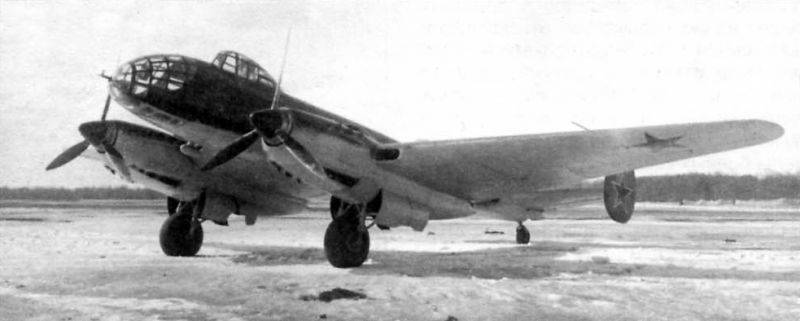
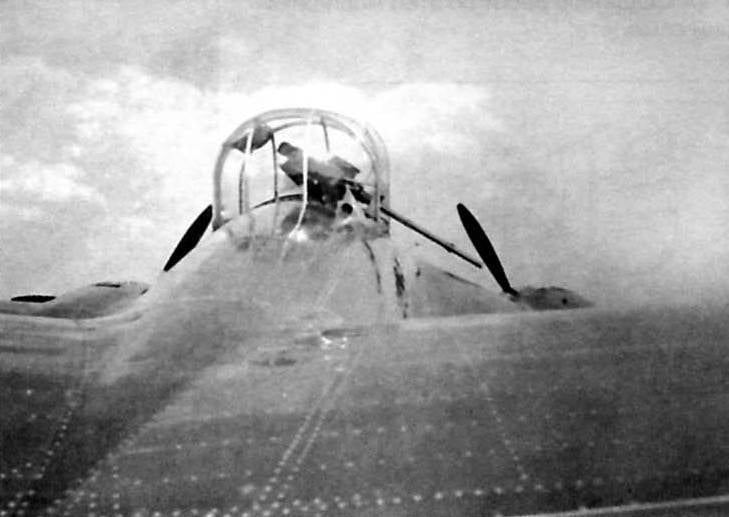
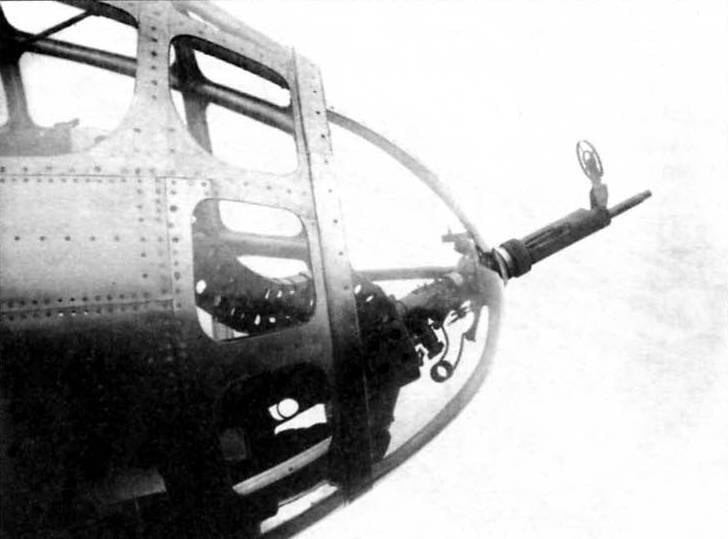

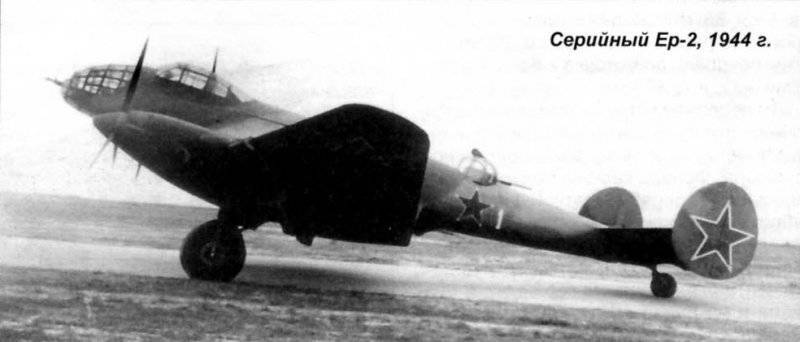
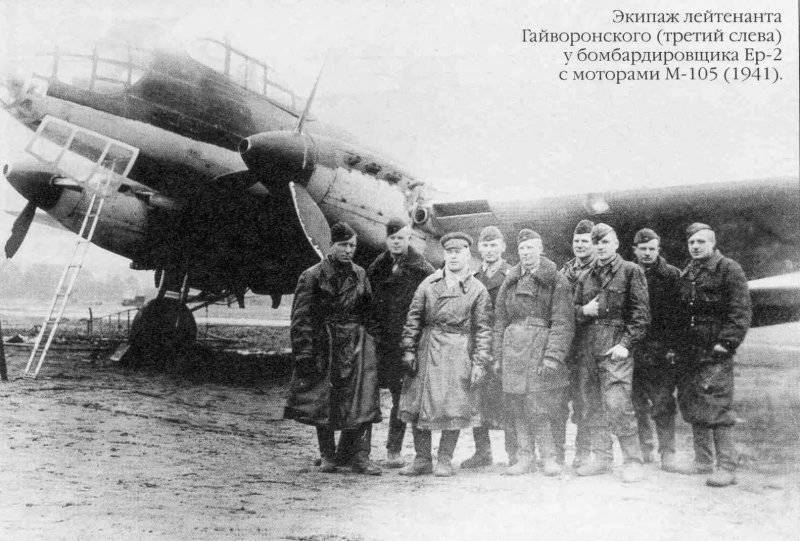
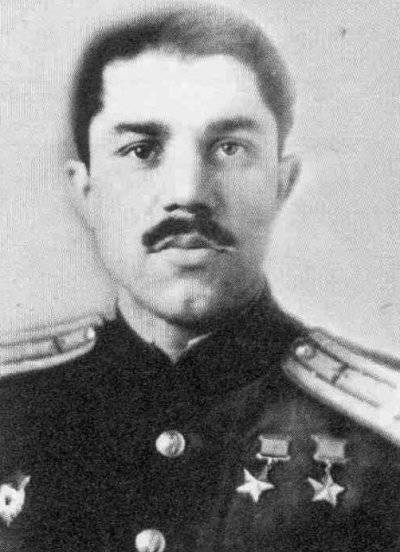
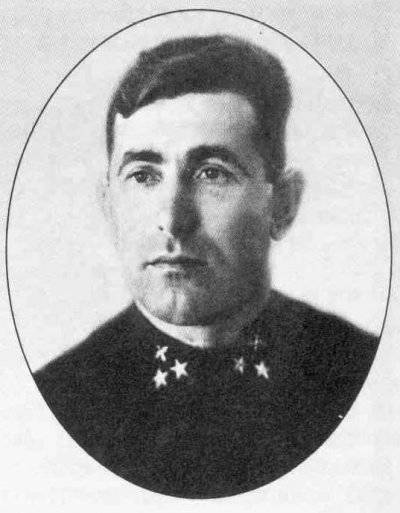
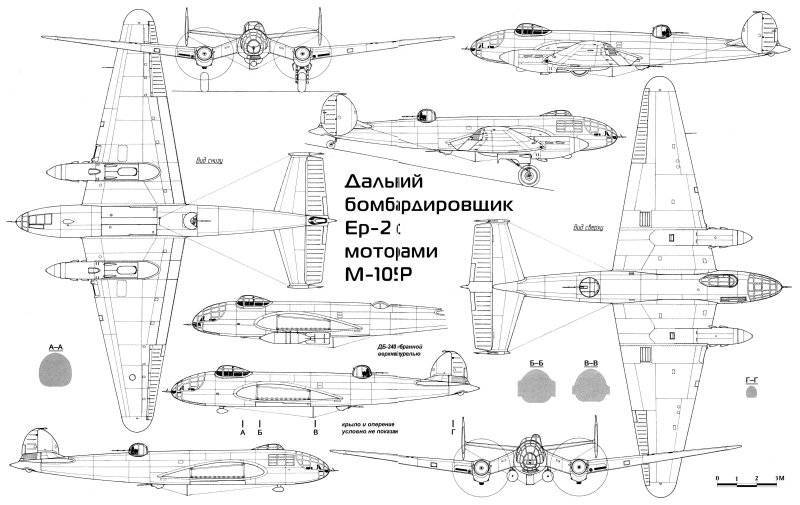
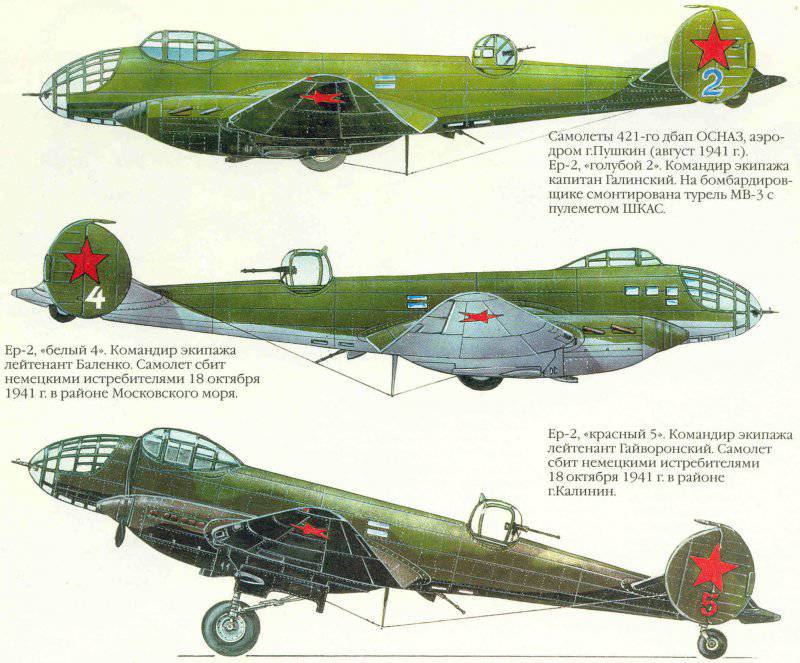
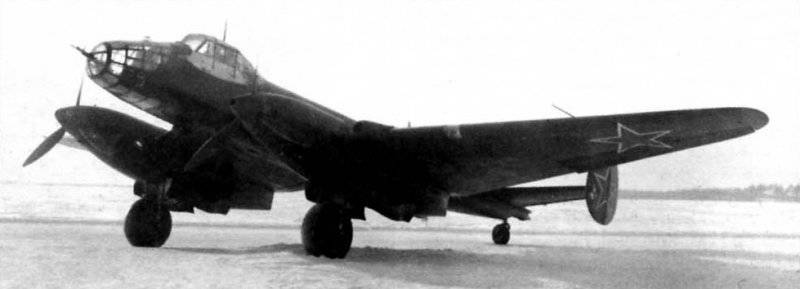
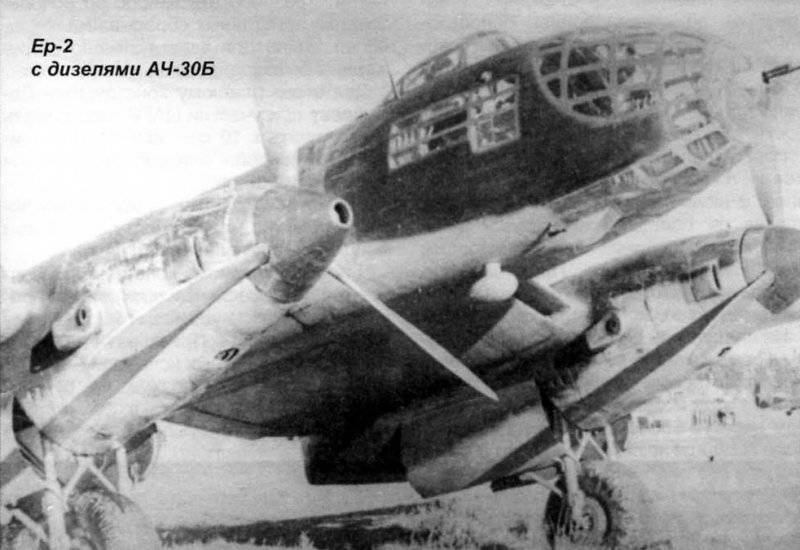

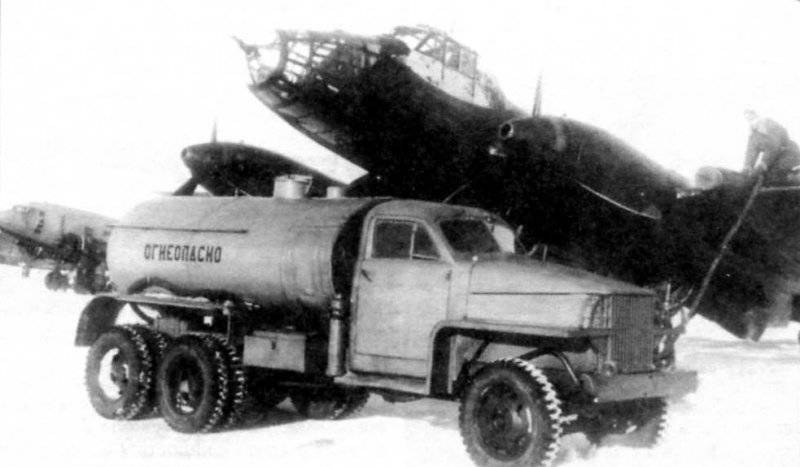
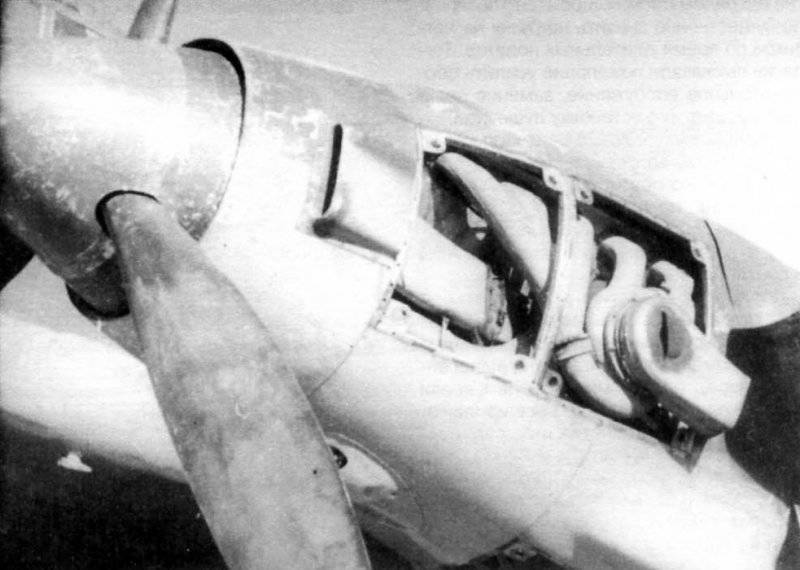
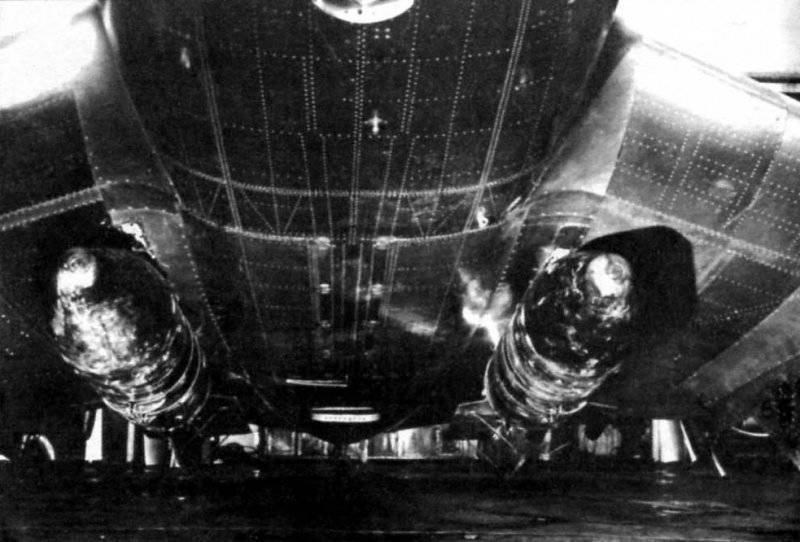
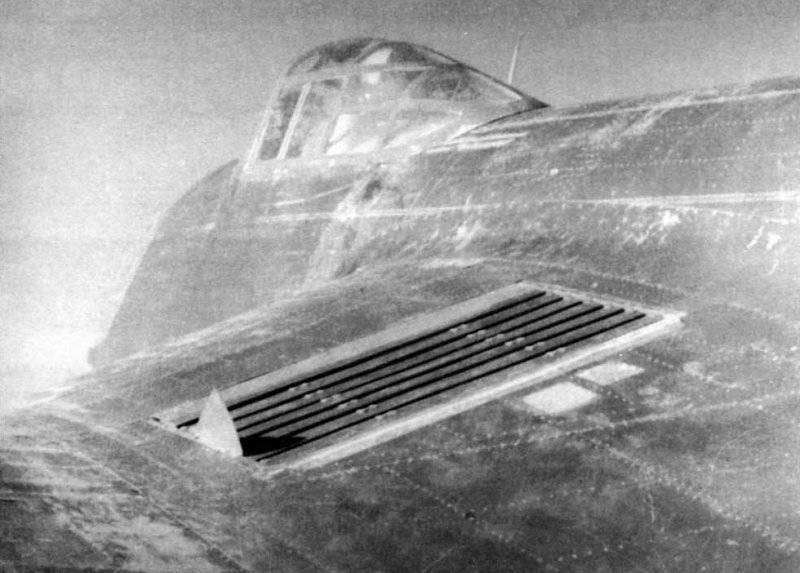
Information